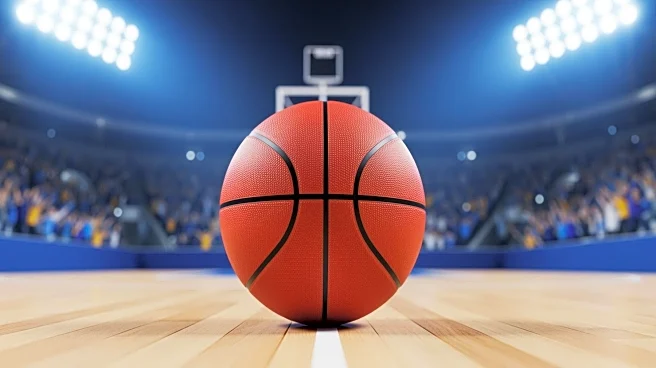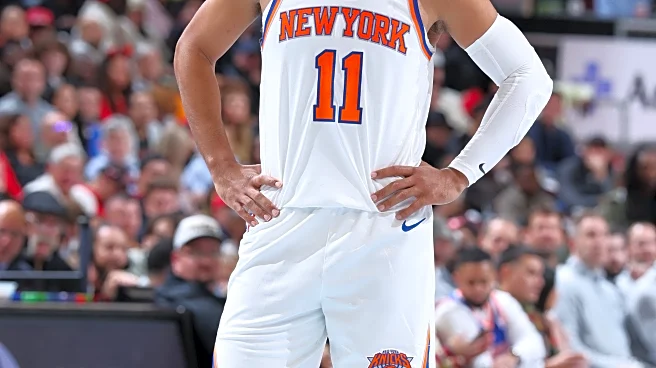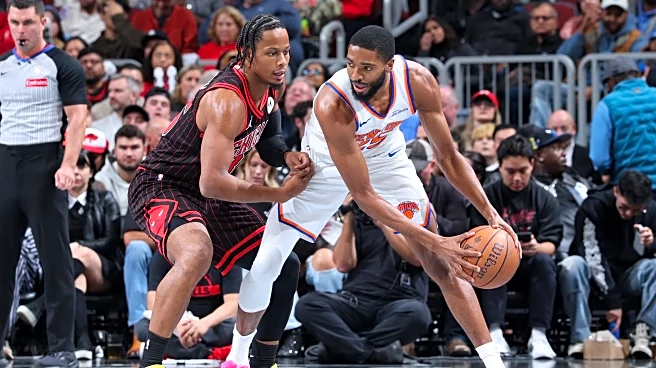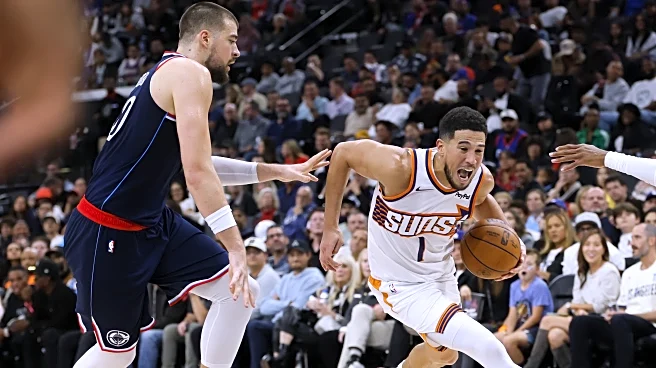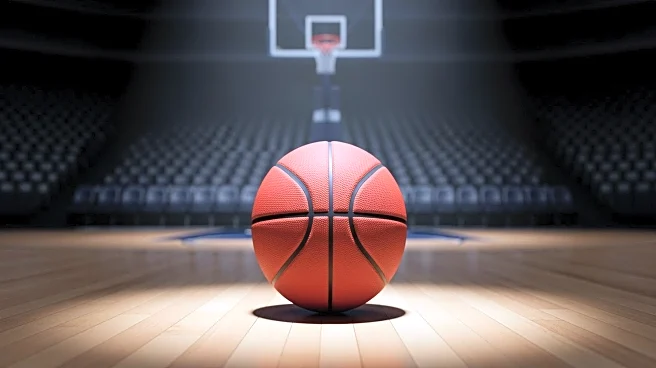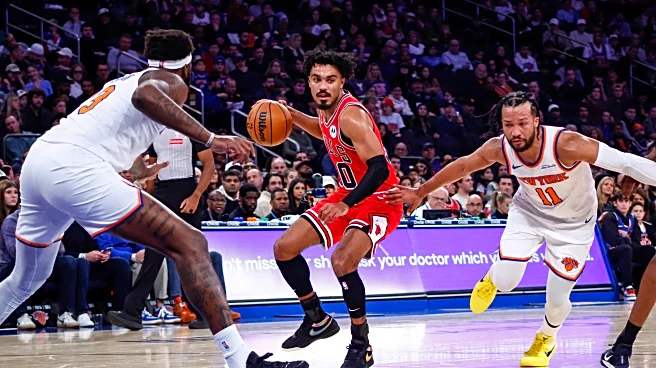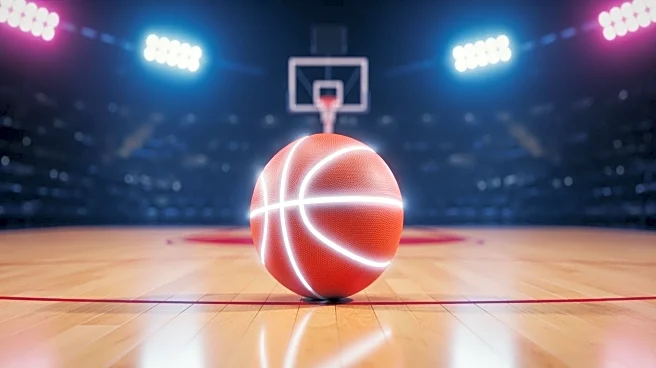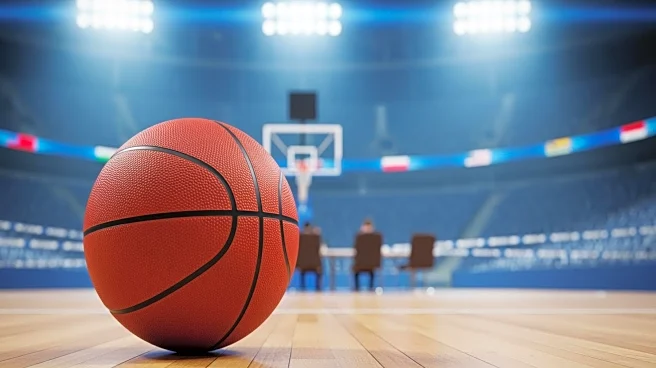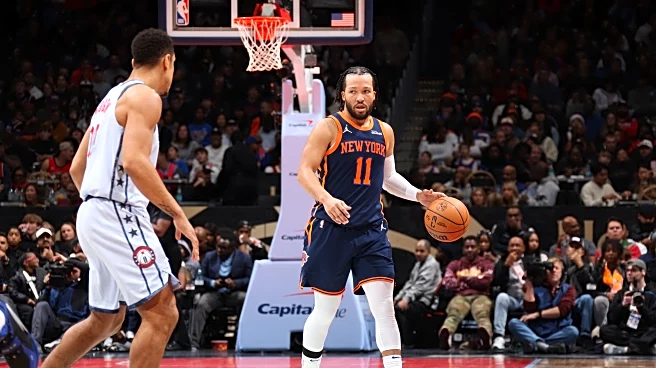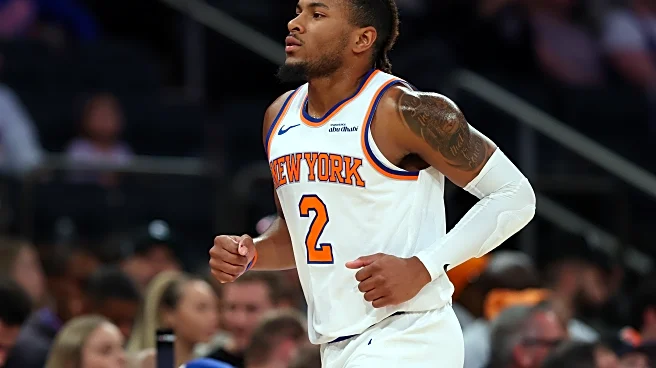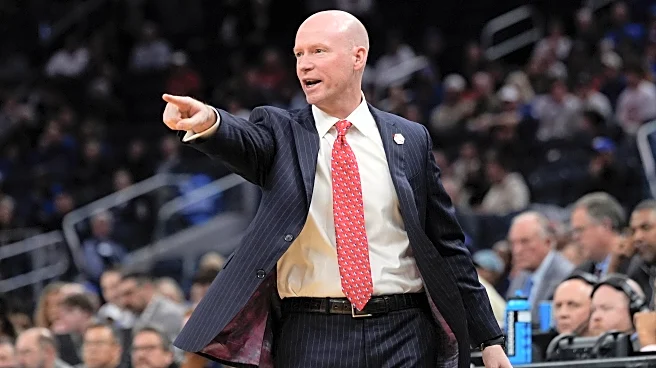What's Happening?
Nine former Villanova Wildcats are currently making their mark in the NBA during the 2025-26 season. These players include Saddiq Bey, Mikal Bridges, Jalen Brunson, Donte DiVincenzo, Collin Gillespie, Josh Hart, Kyle Lowry, Jeremiah Robinson-Earl, and
Cam Whitmore. Each player has secured significant contracts and is contributing to their respective teams. For instance, Saddiq Bey, playing for the New Orleans Pelicans, has a guaranteed contract worth $19 million, while Mikal Bridges of the New York Knicks has a four-year contract valued at $150 million. Jalen Brunson, also with the Knicks, boasts a salary of nearly $35 million for the season. These players are not only recognized for their financial success but also for their on-court achievements, such as All-Star selections and championship wins.
Why It's Important?
The presence of Villanova alumni in the NBA highlights the university's strong basketball program and its ability to develop players who succeed at the professional level. This success can enhance Villanova's reputation, potentially attracting more talented recruits to the school. For the NBA teams, having players with proven college success and professional experience can be a significant asset, contributing to team performance and fan engagement. The financial commitments made to these players also reflect their perceived value and potential impact on the league.
What's Next?
As the NBA season progresses, these Villanova alumni will continue to play pivotal roles for their teams. Their performances could influence team standings and playoff prospects. Additionally, their contracts and future free agency statuses will be closely watched by teams looking to bolster their rosters. The ongoing development and success of these players could further solidify Villanova's reputation as a breeding ground for NBA talent.
Beyond the Headlines
The success of Villanova alumni in the NBA also underscores the broader trend of college basketball programs serving as critical pipelines to professional leagues. This dynamic raises questions about the balance between collegiate athletics and academics, as well as the role of universities in preparing athletes for professional careers. The financial aspects of these players' contracts also highlight the economic dimensions of professional sports, where player salaries and team budgets are closely scrutinized.
